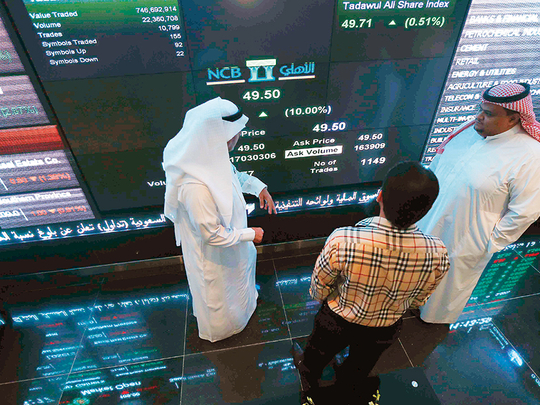
Dubai: The GCC banking sectors’ performance is closely linked to the economic recovery of these countries, according to analysts at rating agency Standard & Poor’s (S&P).
S&P expects economic growth in the GCC countries to recover rather slowly from last year’s sharp recession triggered by the COVID-19 pandemic and low oil prices. However, the rating agency sees long-lasting adverse effects from the 2020 shock on GCC economies and banking sectors.
“Saudi and Qatar’s banking sectors will be less impacted than those in the UAE, Oman, and Bahrain, while in Kuwait the story will depend on the evolution of the fiscal impasse,” said Mohamed Damak, a senior director in financial services at S&P.
Slow recovery
Real GDP across the GCC contracted sharply in 2020 because of low oil prices and a significant COVID-19-related slump in the hospitality, commerce, and real estate sectors.
“We expect oil prices will average $60 for 2021 and 2022 and continued progress on vaccine rollouts but see downside risks from further virus waves,” said Benjamin Young, a director at S&P.
Dubai Expo 2020 and the football World Cup in Doha in 2022, as well as hydrocarbon sector recovery, will boost economic growth but it will remain below historical levels. S&P expects, most GCC countries will not return to 2019 nominal GDP before 2023, with an even longer road for Saudi Arabia.
The rating agency expects a full recovery in the global aviation and tourism industries will take time and continued weak recovery of global air travel in 2021-2022. In the real estate sector too, analysts expect negative investment sentiment to persist and demand remain subdued.
“Although we have seen a significant decline in new launches in Dubai, we still expect the supply overhang to limit any short-to-medium-term recovery,” said Puneet Tuli, an associate at S&P.
S&P expects banks’ asset-quality indicators will continue to deteriorate and cost of risk to remain high as they start recognizing the true impact of impairments in 2020 and forbearance measures are lifted in second-half 2021.
Given continued low interest rates, banks’ profitability will remain low in 2021 and beyond, with some potentially showing losses in 2021.
Pressure on profitability
GCC banks suffered a triple shock to profitability in 2020 from lower lending growth, lower-for-longer interest rates, and higher cost of risk.
“We expect muted lending growth in all GCC countries except Qatar and Saudi Arabia,” said Damak.
In Saudi, mortgage lending continues to expand due to the authorities’ objective of increasing home ownership, while in Qatar government projects are boosting growth.
Corporate demand for loans will likely improve only slightly, with some deferred 2020 capital expenditure and debt refinancing potentially occurring this year.
“We expect a deterioration of asset quality across the board, with nonperforming loans increasing. This will not be helped by the lifting of regulatory forbearance measures, although we expect it to be progressive,” said Damak.
S&P analysts said the measures implemented by most central banks in the region are supportive of liquidity but do not remove or reduce credit risk from the balance sheet of banks (yet).
The UAE plans to vaccinate 50 per cent of its population by March 31, 2021, and the entire population by year-end. Other GCC countries are also progressing well with their programmes.
Although vaccination programs are progressing, recovery of the aviation and hospitality sectors will take time, with likely significant downside risks from further waves and mutations of the virus.
Capitalisation and funding
GCC banks’ capitalization will continue to support their creditworthiness in 2021. Banks stepped up Additional Tier 1 issuances (both conventional and Islamic) in 2020 to benefit from supportive market conditions and this should continue in 2021.








